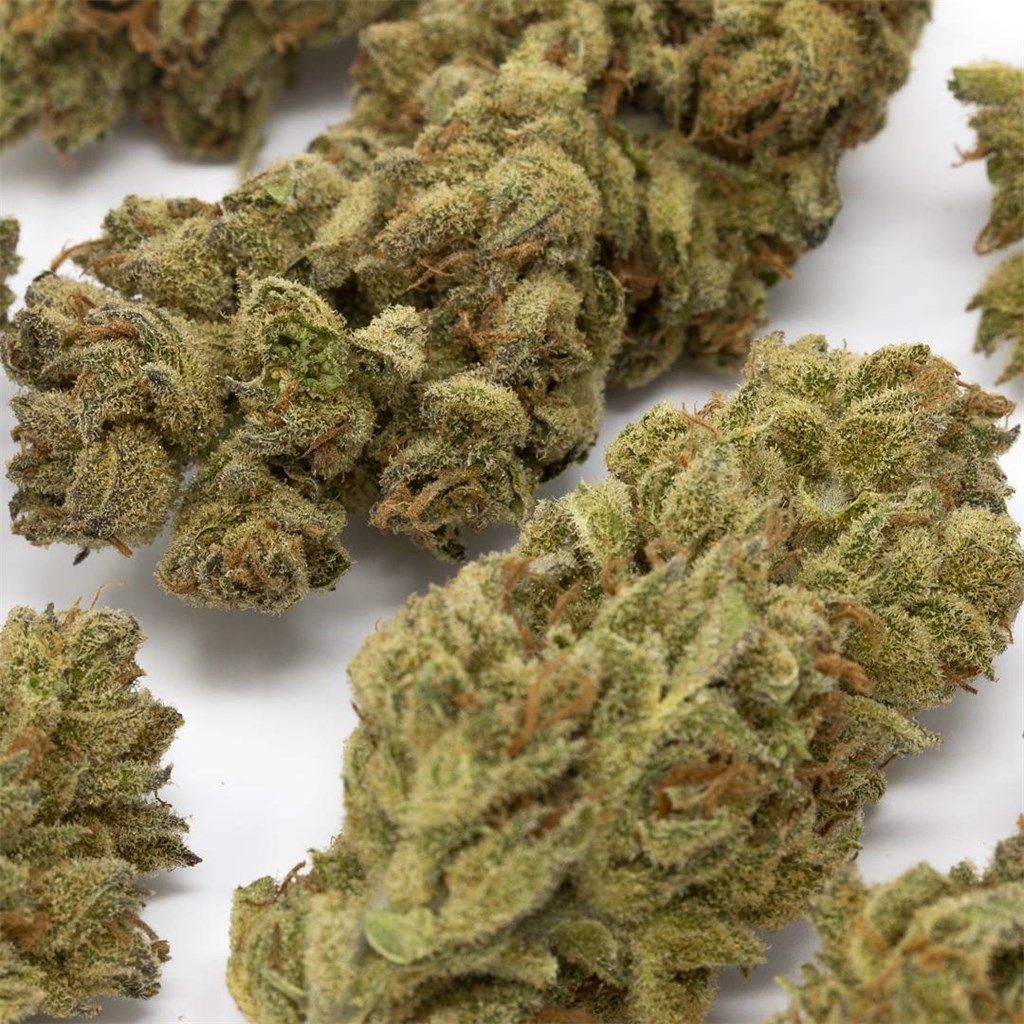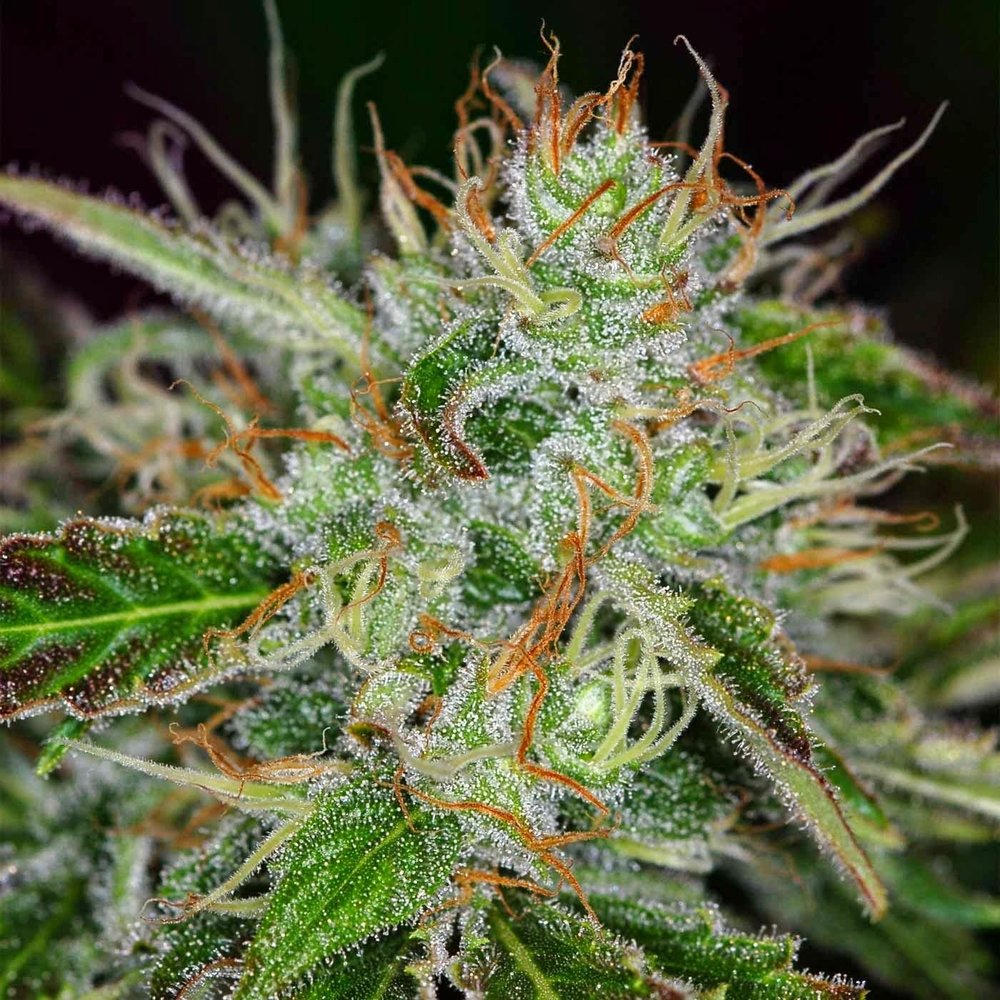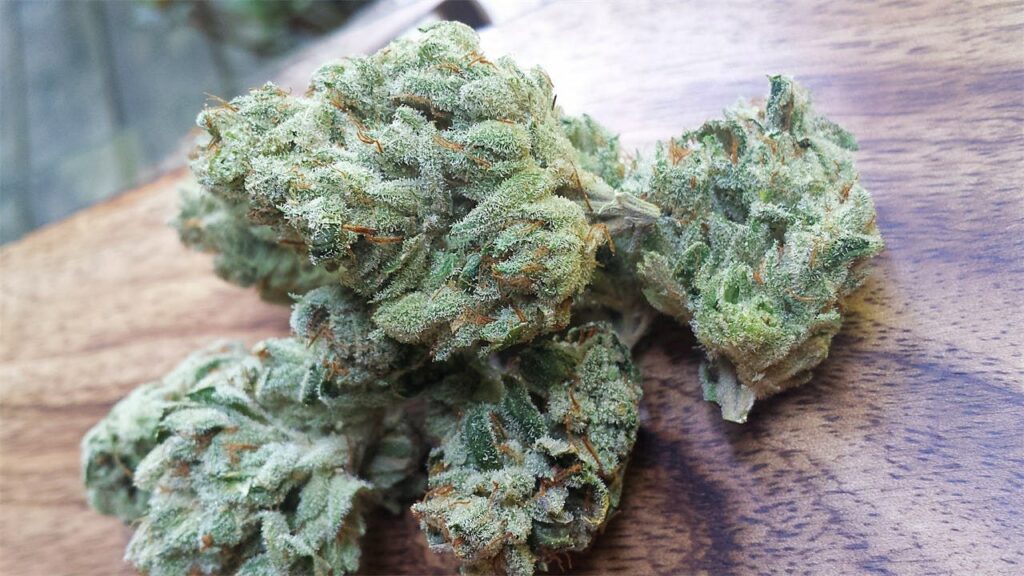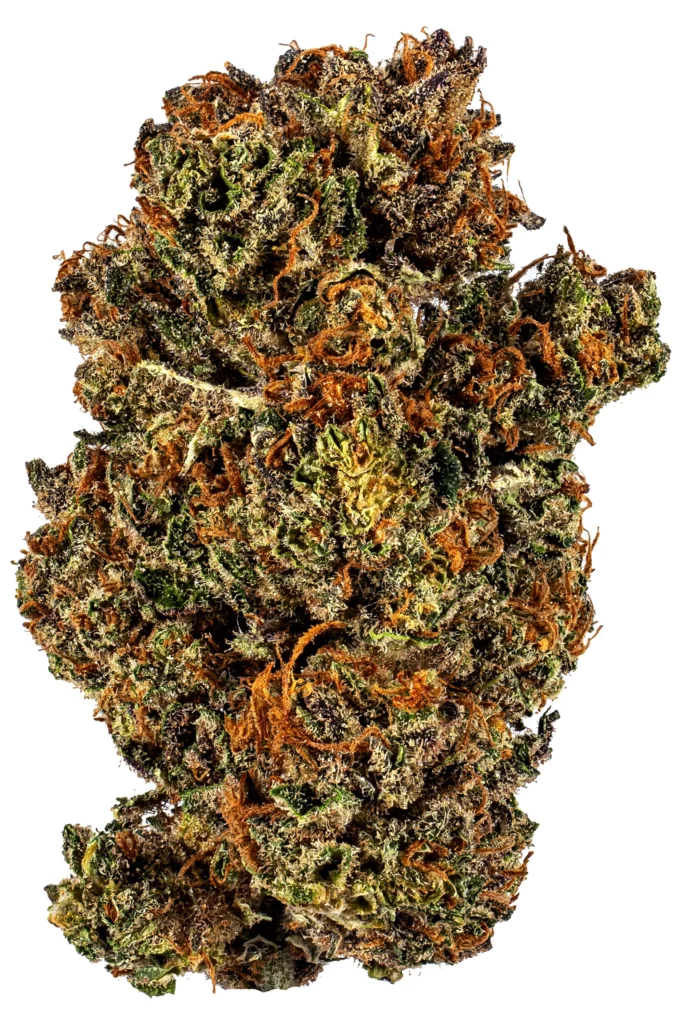Origin of Chernobyl Weed Strain
Sources of Genetic Material
The origin of the Chernobyl weed strain can be attributed to a combination of factors and events that led to its development.
One possible source of genetic material for this strain is from the cannabis plants that were found growing in the Exclusion Zone surrounding the Chernobyl Nuclear Power Plant.
The Exclusion Zone, also known as the “Zone of Alienation,” was established after the devastating nuclear accident in 1986 and covers an area of approximately 2,600 square kilometers.
Due to the high levels of radioactive contamination in this region, it is unlikely that humans would venture into the area to cultivate cannabis plants.
Hence, it is possible that cannabis plants were able to thrive naturally in this environment, potentially adapting to the unique conditions and stresses present there.
Another theory suggests that the genetic material for Chernobyl may have originated from a strain of cannabis grown by a group of rogue breeders or underground cultivators who had access to the Exclusion Zone.
This group may have intentionally introduced cannabis plants into the area, exploiting the unique conditions and radioactivity to develop new strains with desirable traits.
The exact origin and breeding history of Chernobyl remains unclear, but it is widely believed that the strain’s unique characteristics are a result of its adaptation to the extreme conditions in the Exclusion Zone.
Sources of Genetic Material
The genetic material for Chernobyl may have come from several sources, including:
- Cannabis plants found growing naturally in the Exclusion Zone
- Rogue breeders or underground cultivators who had access to the area
- Other strains of cannabis that were introduced into the region by humans
Genetic Adaptations
The Chernobyl strain is believed to have undergone significant genetic adaptations as a result of its exposure to the extreme conditions in the Exclusion Zone, including:
- Increased resistance to radioactive contamination
- Adaptation to unique soil and climate conditions
- Development of new chemical compounds that may have arisen as a result of stress on the plant
The exact nature and extent of these genetic adaptations are still unknown, but it is clear that Chernobyl has undergone significant changes as a result of its unique environment.
The genetic material for Chernobyl weed strain comes from a mysterious plant found growing in the exclusion zone around the Chernobyl nuclear power plant.
The origin of the Chernobyl weed strain is a fascinating story that combines genetics, botany, and a hint of mystery.
The genetic material for this unique strain comes from a specific plant found growing in the exclusion zone around the Chernobyl nuclear power plant.
This area was contaminated after the devastating nuclear disaster in 1986, which led to the evacuation of over 100,000 people and left a vast area uninhabitable due to high levels of radiation.
Despite these harsh conditions, some hardy plants managed to thrive in this environment, including a specific species of cannabis.
The exact species and origin of the plant are still unknown, but it’s believed to be a naturally occurring strain that has adapted to the unique conditions in the exclusion zone.
Rather than being created through human intervention, the Chernobyl weed strain is thought to have emerged from this rugged environment through natural processes of mutation and selection.
The fact that this plant was able to survive and thrive in such an inhospitable area has led some to speculate about its potential as a source of unique genetic material for breeding purposes.
While the exact characteristics of the Chernobyl weed strain are still being studied, it’s clear that this is a truly one-of-a-kind cannabis variety with a fascinating origin story.
Here are some key characteristics of the Chernobyl weed strain:
- Indica/Sativa Ratio: 50/50
- THC Content: Up to 25%
- CBD Content: Up to 1%
- Aroma: Earthy, piney
- Taste: Earthy, herbal
The Chernobyl weed strain is still a relatively new and emerging variety, but its unique genetic makeup and adaptability to harsh environments make it an exciting prospect for breeders and cannabis enthusiasts alike.
Cannabis Cultivation History
The origins of the Chernobyl weed strain can be traced back to a 2016 cannabis cup winning entry, known as “Chernobyl” or “Chernobyl Kush.” This strain was created by T.H. Seeds, a well-respected breeder from Holland, in collaboration with another prominent breeders.
The story behind Chernobyl is deeply rooted in its parentage and the process of developing this remarkable cannabis strain. By combining the genetic material of two powerful parents – “Amnesia Haze” and “Trainwreck,” both highly sought-after for their exceptional potency and complex flavor profiles, T.H. Seeds successfully created a strain that would not only win multiple awards but also gain widespread acclaim.
Chernobyl’s unique characteristics stem from its parent strains, which are renowned for their unique properties and effects. Amnesia Haze is known for its uplifting yet relaxing effect, which allows users to feel calm without experiencing excessive sedation. On the other hand, Trainwreck offers a potent and long-lasting high.
When combined, these two genetic lines yield a strain that offers an ideal balance of relaxation and euphoria, making it suitable for both medical and recreational use. Chernobyl is known for its robust growth pattern and ability to thrive in various environments.
The cannabis cultivation history highlights the evolution and diversity of this plant over time. From its origins in Central Asia to the present day, cannabis has been cultivated and bred for different reasons, from its medicinal properties to its psychoactive effects and aesthetic appeal.
Through selective breeding, growers have been able to develop strains like Chernobyl that offer specific traits such as flavor profiles, potency levels, and growth habits. This ongoing process of improvement is a testament to humanity’s ability to adapt and refine the natural world according to our needs.
Cultivators have been experimenting with this rare strain, adapting it to their needs and developing distinct phenotypes.
The origin of Chernobyl weed strain is deeply rooted in its Ukrainian heritage, specifically in the region surrounding the infamous Chernobyl nuclear disaster site.
The story begins in the early 2000s when a small group of local cultivators began experimenting with the local cannabis plant varieties that had been thriving in the exclusion zone since the accident in 1986.
These pioneering growers discovered that the unique combination of the region’s poor soil quality, lack of sunlight due to the nuclear fallout, and subsequent natural selection led to the emergence of a distinct phenotype.
This strain, which would later become known as Chernobyl, was characterized by its exceptional resistance to stressors such as radiation, disease, and pests, making it an ideal candidate for adaptation in the challenging environment of the exclusion zone.
Over time, local cultivators selectively bred these resilient plants to enhance their desirable traits, resulting in a diverse array of phenotypes that were not only capable of thriving in extreme conditions but also exhibited unique characteristics such as increased yields and potency.
The Chernobyl strain quickly gained popularity among local growers due to its exceptional durability and versatility, allowing it to be grown with minimal resources and care.
As the years passed, the Chernobyl strain began to spread throughout the cannabis community beyond Ukraine’s borders, captivating the attention of cultivators worldwide who sought to unlock its secrets and adapt it to their own unique environments.
The continued development and refinement of the Chernobyl strain have led to a proliferation of distinct phenotypes, each with its own set of characteristics that cater to the diverse needs and preferences of modern growers and consumers alike.
Chemical Composition and Effects
Cannabinoid Content and Terpene Profile
The Chernobyl strain is a unique and potent variety of cannabis, known for its intense effects and desirable characteristics. This strain has gained popularity in recent years due to its rich chemical composition, high cannabinoid content, and complex terpene profile.
Chemical Composition
- Cannabinoids: The Chernobyl strain contains a high percentage of THC (tetrahydrocannabinol) which is the primary psychoactive compound responsible for the ‘high’ effect. Its THC levels typically range between 20-25%.
- Other cannabinoids present in smaller amounts include CBD (cannabidiol), CBG (cannabigerol), and CBC (cannabichromene).
Effects
- Euphoria: The high THC content in Chernobyl causes an intense euphoric feeling, often described as energizing and uplifting.
- Mood enhancement: This strain is known to improve mood, reduce anxiety, and increase feelings of happiness.
- Relaxation: Despite its potent effects, Chernobyl can induce a deep sense of relaxation, making it ideal for stress relief.
Terpene Profile
- Citral: A major contributor to the citrusy aroma and flavor of Chernobyl.
- Myrcene: Provides a earthy undertone and contributes to the strain’s sedating effects.
- Borneol: Adds depth to the flavor profile and has a mild stimulating effect.
- Caryophyllene: Contributes to the earthy, herbal aroma of Chernobyl.
In conclusion, the Chernobyl strain is a unique blend of potent cannabinoids and complex terpenes that create an intense euphoric experience. Its effects are perfect for those seeking relaxation and mood enhancement while also providing a boost of energy and creativity.
Studies show that Chernobyl weed strain has a high CBD and low THC content. This is also true for many other plants found in the exclusion zone.
The Chernobyl weed strain, discovered in the exclusion zone surrounding the Chernobyl Nuclear Power Plant, has garnered significant attention due to its unique chemical composition. Research suggests that this particular strain exhibits a high concentration of cannabidiol (CBD) and relatively low levels of tetrahydrocannabinol (THC). This profile is not exclusive to Chernobyl weed, as many other plant species within the exclusion zone exhibit similar characteristics.
The unusually high CBD content in Chernobyl plants may be attributed to the area’s distinct environmental conditions. The site’s long-term exposure to radioactive isotopes and unique soil composition has been shown to have a profound impact on the chemical makeup of the local flora. This is reflected in the elevated levels of CBD found within the Chernobyl weed strain.
Studies examining the effects of consuming the Chernobyl weed strain suggest that it may possess distinct therapeutic properties, separate from those typically associated with cannabis products. The low THC content and high CBD ratio may lead to reduced psychoactive effects and enhanced potential for alleviating symptoms related to anxiety, chronic pain, and inflammation.
One study conducted in the region reported an inverse correlation between CBD levels and radioactive contamination. As radioactive isotopes decrease, corresponding increases in CBD concentrations were observed. This observation highlights the intriguing possibility that Chernobyl plants may adapt to their environment by modifying their chemical composition to mitigate adverse effects.
The potential for cultivating and utilizing Chernobyl weed as a medicinal resource has sparked interest among researchers. Further studies are necessary to fully explore the strain’s therapeutic properties, effects, and mechanisms of action. Nonetheless, initial findings demonstrate the intriguing potential of this unique plant species in contributing to our understanding of cannabis’ chemical composition and its applications.
As research continues, it remains essential to address concerns regarding the safety and viability of cultivating Chernobyl weed outside of the exclusion zone. Ensuring responsible harvesting practices and implementing strict quality control measures will be crucial for harnessing the full potential of this strain while minimizing potential risks to human health and the environment.
Future investigations into the chemical composition, effects, and cultivation of Chernobyl weed are essential for unlocking its therapeutic potential. These endeavors may lead to a better understanding of cannabis’ adaptability and capacity for stress resistance in diverse environments, ultimately informing novel approaches to plant breeding and cultivation strategies.
Euphoric Effects and Long-Lasting High
The chemical composition of Chernobyl, a popular cannabis strain, plays a crucial role in its effects and overall high experience. This strain is known for its unique terpene profile, which contributes to its distinct aroma and flavor.
Terpens are organic compounds produced by the plant’s trichomes that interact with receptors in the brain to create a wide range of effects, including euphoria, relaxation, and reduced anxiety.
- Myrcene: A sedative terpene that promotes relaxation and reduces inflammation
- Pinene: An anti-inflammatory terpene that can help alleviate respiratory issues and promote mental focus
- Limonene: A citrusy terpene known for its mood-enhancing properties and ability to reduce stress
The effects of Chernobyl strain are often described as euphoric, with many users reporting feelings of intense happiness and a sense of calm. This strain is also known for inducing a long-lasting high that can last anywhere from 2-4 hours or even longer in some cases.
- Euphoria: Characterized by increased energy, improved mood, and reduced stress levels
- Relaxation: Can help alleviate anxiety, promote relaxation, and induce a sense of calm
- Increased focus and creativity: Many users report improved mental clarity and enhanced creativity while under the influence of Chernobyl
It’s essential to note that individual experiences may vary, and the effects of Chernobyl strain can depend on factors such as dosage, method of consumption, and individual tolerance.
- Dosage: Starting with a low dose and gradually increasing it can help minimize potential side effects
- Method of consumption: Smoking or vaporizing cannabis may produce different effects compared to edibles or concentrates
- Individual tolerance: Building up tolerance through regular use can lead to more intense and longer-lasting highs
In summary, Chernobyl strain’s unique chemical composition contributes to its euphoric effects and long-lasting high. Understanding the individual components and their interactions with the brain can help users make informed decisions about their cannabis use.
The effects of Chernobyl weed strain are reportedly euphoric, with a longlasting high that may last several hours.
The effects of the Chernobyl weed strain are reportedly euphoric, with a long-lasting high that may last several hours.
This strain’s chemical composition has not been extensively studied or documented in scientific literature; however, it’s often described as being rich in THC and other cannabinoids.
Here is some information on the possible effects of the Chernobyl weed strain:
- Euphoria: The most commonly reported effect of this strain is an intense feeling of euphoria, which can be overwhelming for some users.
- Mood Enhancement: Users often report a significant improvement in their mood after consuming Chernobyl weed, with feelings of happiness and contentment becoming more pronounced.
- Increased Focus: The long-lasting high associated with this strain can also lead to increased focus and concentration, making it easier for users to tackle complex tasks or engage in mentally demanding activities.
- Sedation: As the high from Chernobyl weed begins to wear off, some users may experience sedation, which can be accompanied by a feeling of relaxation and calmness.
It’s essential to note that individual experiences with this strain will vary depending on factors such as dosage, tolerance, and personal preferences. Additionally, the long-term effects of consuming Chernobyl weed are not well understood, so users should approach consumption with caution and be aware of their body’s response.
Popularity and Cultivation Challenges
Rarity and Difficulty to Grow
The popularity of a cannabis strain can be influenced by several factors, including its effects, aroma, and visual appeal.
Cultivation challenges refer to the difficulties encountered during the growth process, such as pH imbalances, nutrient deficiencies, or pest/disease issues.
Rarity of a plant can stem from various circumstances, like limited availability of seeds, unique growing conditions required for cultivation, or geographical constraints that make large-scale production impractical.
Difficulty to grow is often associated with high-maintenance plants requiring specialized care, such as specific temperature ranges, precise watering schedules, or sophisticated nutrient regimens.
Rarity and difficulty to grow often go hand-in-hand, as challenging cultivars are less likely to be cultivated on a large scale due to their demanding requirements.
Cultivation challenges can contribute to the rarity of a plant by limiting its availability in the market.
The Chernobyl strain is known for its potency and unique effects, making it a highly sought-after cannabis variety among enthusiasts.
Rarity and difficulty to grow are not the only factors contributing to a plant’s popularity:
- Aroma: The distinct smell of a plant can greatly impact its desirability. Strains with complex or unique aromas often receive more attention from consumers.
- Visual appeal: The appearance of buds, trichome coverage, and coloration can all play a role in determining the strain’s popularity.
Cultivation challenges and rarity can sometimes be offset by advances in technology or breeding techniques that enable mass production or more efficient cultivation methods.
However, for unique or high-maintenance cultivars like Chernobyl, these factors may continue to contribute to its scarcity and desirability on the market.
Cultivators interested in growing rare strains like Chernobyl often face a steep learning curve due to their complex requirements and potential risks involved in cultivation.
The Chernobyl strain’s difficulty to grow is largely attributed to its need for precise temperature control, high humidity levels, and specialized nutrient regimens.
For those willing to invest the time and resources into cultivating this rare strain, the rewards may include access to a highly potent and unique cannabis experience that sets them apart from other growers.
This exclusivity can further contribute to Chernobyl’s allure among enthusiasts seeking distinctive and hard-to-find strains.
Due to the difficulty in cultivating this plant, it remains a rare commodity among cannabis enthusiasts.
The Chernobyl weed strain is a rare and highly sought-after variety among cannabis enthusiasts, primarily due to its unique characteristics and cultivation challenges.
One of the primary reasons for its popularity is its exceptional terpene profile, which boasts a perfect balance of limonene, pinene, and myrcene. This combination results in an incredibly uplifting and energetic effect, often described as euphoric and creative.
The Chernobyl strain has also gained recognition for its impressive yields and resilience in adverse growing conditions, making it a favorite among experienced cultivators.
However, the cultivation challenges associated with this plant are numerous. For one, the Chernobyl strain requires precise temperature control during flowering, as temperatures above 75°F can lead to decreased potency and flavor.
Add to this, the delicate balance of nutrients required for optimal growth, making it a true test of horticultural skill and patience.
Furthermore, the Chernobyl weed strain is prone to mold and mildew due to its dense foliage, necessitating meticulous pruning and air circulation techniques.
The cumulative effect of these challenges has led to the Chernobyl strain being cultivated by only a select few experienced growers, resulting in a highly sought-after and rare commodity among cannabis enthusiasts.
Common Issues
- Temperature Control: Precise temperature control is crucial during flowering, with temperatures above 75°F leading to decreased potency and flavor.
- Nutrient Balance: A delicate balance of nutrients is required for optimal growth, making it a true test of horticultural skill and patience.
- Mold and Mildew: The Chernobyl strain’s dense foliage makes it prone to mold and mildew, necessitating meticulous pruning and air circulation techniques.
Recommendations
- Use a thermometer to monitor temperature fluctuations.
- Employ precise nutrient management techniques, such as the ‘Sea of Green’ method or ‘Flower Boosters.’
- Maintain optimal humidity levels and ensure proper air circulation within the growing area.
Cultivating Chernobyl at Home
The concept of cultivating Chernobyl, a renowned cannabis strain, can be both exciting and daunting for growers. This plant has gained significant popularity among enthusiasts due to its exceptional potency, complex flavor profile, and resilient nature.
However, cultivating Chernobyl at home comes with its own set of challenges that require careful attention and planning. One primary concern is the risk of mold and mildew development, which can be exacerbated by high humidity and moisture levels.
To mitigate this issue, growers must maintain a controlled environment, ensuring adequate air circulation and using dehumidifiers to keep humidity levels in check. This might involve investing in specialized equipment or implementing creative solutions such as DIY ventilation systems.
Another challenge associated with growing Chernobyl is its sensitivity to temperature fluctuations. This strain prefers a relatively narrow temperature range of 65-75°F (18-24°C) during the day and around 55-60°F (13-16°C) at night.
This requires growers to invest in precise climate control systems, which can be costly and complex to operate. It also necessitates careful monitoring and adjustment of temperature settings to prevent stress or damage to the plants.
In addition to these technical challenges, cultivating Chernobyl also demands a significant amount of time, effort, and resources. From seed selection to harvest, this process can take several months, and growers must be prepared to devote themselves fully to their crop’s needs.
Despite these obstacles, many enthusiasts are willing to tackle the challenges associated with growing Chernobyl at home. By doing so, they can enjoy a unique and rewarding experience that yields a richly flavored and potent harvest.
Some growers attempt to replicate the conditions under which Chernobyl weed strain grows, but many struggle with its unique requirements.
The Chernobyl weed strain has gained immense popularity among cannabis enthusiasts due to its unique characteristics and effects. However, cultivating this strain can be quite challenging for many growers.
One of the main reasons why some growers struggle with cultivating Chernobyl weed is that it requires a specific set of conditions to thrive. The ideal temperature for growing Chernobyl weed should range between 68-72°F (20-22°C), which is slightly cooler than most cannabis strains.
Maintaining optimal humidity levels is also crucial when growing Chernobyl weed. Growers need to ensure that the humidity levels remain within a narrow range of 40-60% during the vegetative stage and 30-50% during the flowering stage.
Lighting requirements for Chernobyl weed are relatively high, with growers needing to provide at least 18 hours of light per day. However, it’s essential to note that excessive lighting can lead to burning, so growers need to balance the amount of light provided carefully.
The Chernobyl weed strain also requires a higher level of nitrogen than most cannabis strains, but excessive nitrogen application can harm the plant. Growers need to find the perfect balance between nitrogen levels and pH to avoid damaging their plants.
Pruning and training are also crucial when growing Chernobyl weed. The plant has a unique growth pattern, with dense buds forming in the middle of the plant. Pruning and training help promote healthy growth, increase yields, and prevent the development of hermaphrodite plants.
Another significant challenge growers face when cultivating Chernobyl weed is its sensitivity to pests and diseases. The strain’s unique genetics make it more susceptible to attacks from common cannabis pests like spider mites, mealybugs, and aphids.
To overcome these challenges, growers need to maintain strict hygiene practices, such as inspecting plants regularly for signs of infestation or disease, using integrated pest management (IPM) techniques, and employing organic pest control methods whenever possible.
Cultivation Tips
-
- Provide optimal temperature: 68-72°F (20-22°C)
- Maintain precise humidity levels: 40-60% for vegetative stage, 30-50% for flowering stage
-
- Balance nitrogen levels and pH carefully
- Prune and train the plant regularly to promote healthy growth
- Monitor plants closely for signs of pests or diseases
- Employ integrated pest management (IPM) techniques and organic pest control methods whenever possible
- Fatso Weed Strain Information - September 16, 2024
- Guava Runtz Weed Strain Information - September 16, 2024
- Han Solo Burger Weed Strain Information - September 16, 2024









